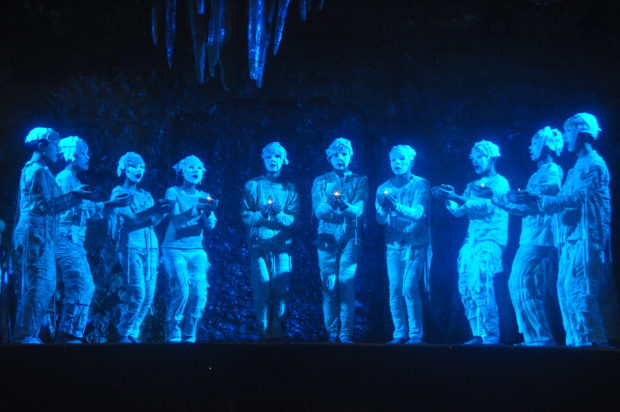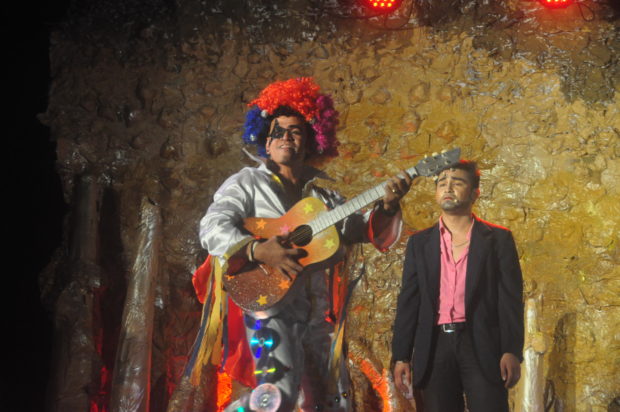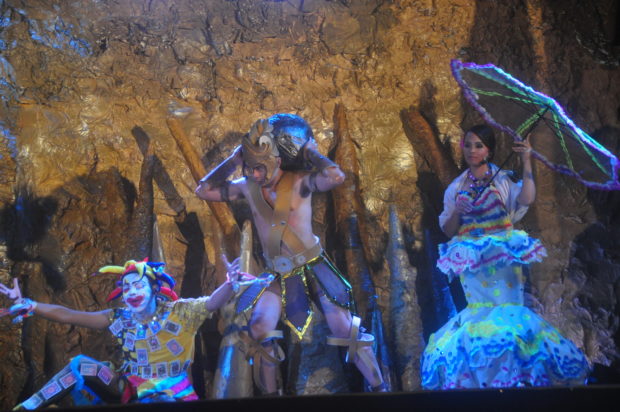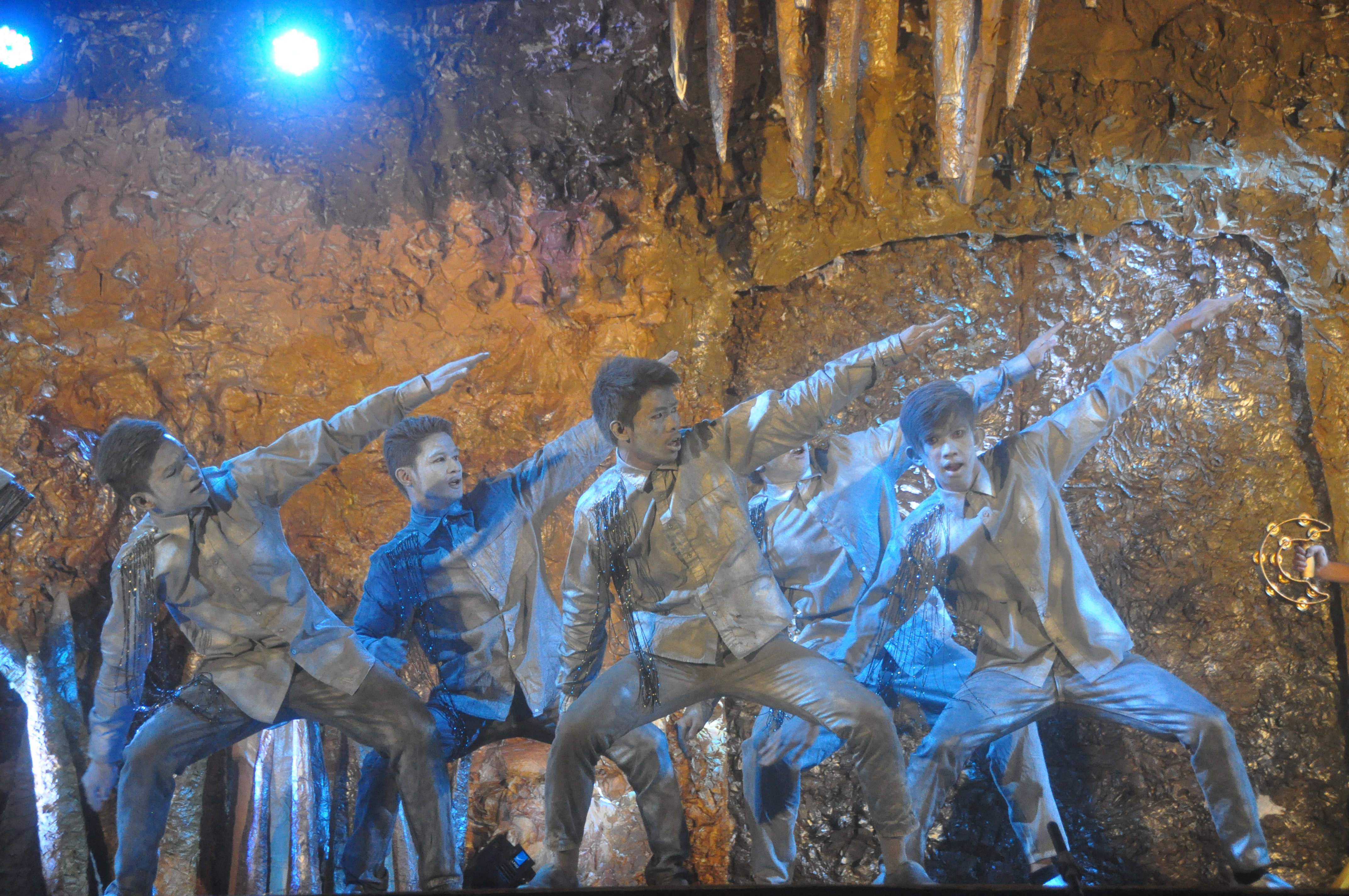
CABUYAO CITY, Philippines–Dulaang Batingaw (DUNGAW) of Pamantasan ng Cabuyao mounted Ang Tao, a Filipino translation of Everyman, last February 23 – 26, 2016. Elmer Rufo translated and directed the play.
The play shows the journey – from life to death – of Tao.
At the start of the play, Bathala orders Kamatayan to tell Tao that he will soon be judged – a signification of Tao’s looming death. When Tao receives the news, he was terrified. It is this terror that prompts him to look for someone he could bring to his death.
He begs Kaibigan (Fellowship), Pinsan (Cousin), Kaanak (Kindred), Yaman (Wealth), Kalakasan (Strength), Pagpapasya (Discretion), Kaalaman (Wisdom), Kagandahan (Beauty), and Limang Katalasan (Five Wits) to join him, but all of them refuse.
 Tao agonizes and in the midst of his agony, Mabuting Gawa (Good Deeds) expresses her willingness to be with Tao – an indication of the Christian belief that one could only bring his good deeds to his final resting place.
Tao agonizes and in the midst of his agony, Mabuting Gawa (Good Deeds) expresses her willingness to be with Tao – an indication of the Christian belief that one could only bring his good deeds to his final resting place.
There is suffering in the play, and this is not physical in nature. Death is not a suffering, but a culmination of an earthly existence. The suffering of the protagonist, Tao, is internal, which starts to build upon his discovery of Kaibigan’s rejection of his plea. As the others blurt the same rejection, Tao’s suffering is intensified, and he seems not to bear the pain.
What makes the suffering seemingly unbearable is the presence of thread of tightness between Tao and the characters he thought he could count on at the time of his death. This intimacy is seemingly unbearable as Tao and each of the characters speak of the good times, but when Tao is finally turned down, the thread breaks and a sound of agony ensues.
Suffering in the play is essential. It humanizes Tao, which is a character of abstraction in a morality play. When Tao is humanized, he becomes a representation of each of the audiences, and his journey in the play becomes the journey of every living individual. For another reason, suffering is vital for without it the didactic nature of the play is lost. Suffering has to be brought to the consciousness of the audiences so that they may be able to avoid its cause.
There are opposing currents in the play – one carrying Tao towards the center, which is death and his fate. The other pushes the other characters away from the center. The tension created by this opposition starts at the early part of the play, ascends towards the center, and reaches its full altitude in the end where Tao falls into the pit of death.
 I laud DUNGAW for its staging of Ang Tao. Although the performance site was not the typical theatre auditorium, the production team was able to stretch the limitations of the venue to a certain length that embraces all the artistic and technical demands of the play. This is a manifestation of passion for theatre that never dies among theatre enthusiasts like DUNGAW.
I laud DUNGAW for its staging of Ang Tao. Although the performance site was not the typical theatre auditorium, the production team was able to stretch the limitations of the venue to a certain length that embraces all the artistic and technical demands of the play. This is a manifestation of passion for theatre that never dies among theatre enthusiasts like DUNGAW.
Rufo’s translation transmitted effectively the narrative of the text while maintaining well its poetic appeal. Moreover, the language was made specific to every cast member who carried directorial rendering. Rufo’s direction was powerful, and its power rested on its clarity, simplicity, and exactness.
In addition, his direction was full of meanings. For example, the confinement of Tao’s journey within the walls of a cave where he experiences suffering and, eventually, death articulates entrapment.
With a production like Ang Tao, DUNGAW will reach greater heights in the theatre scene.











































